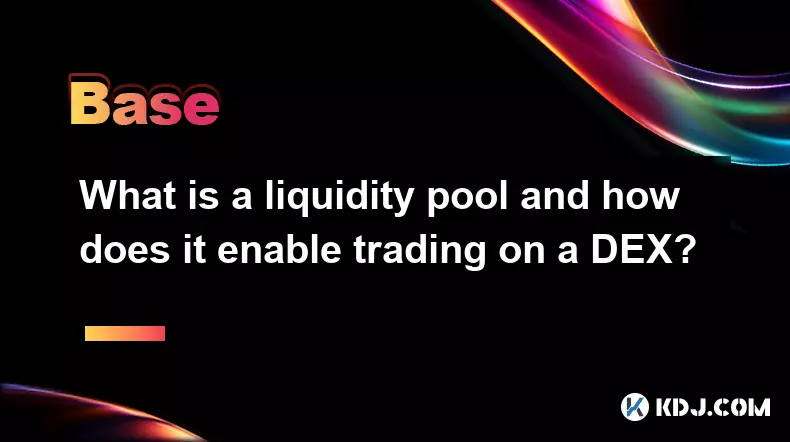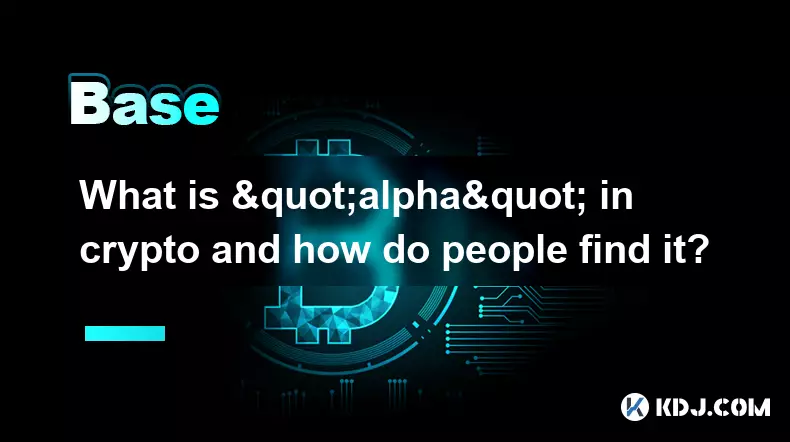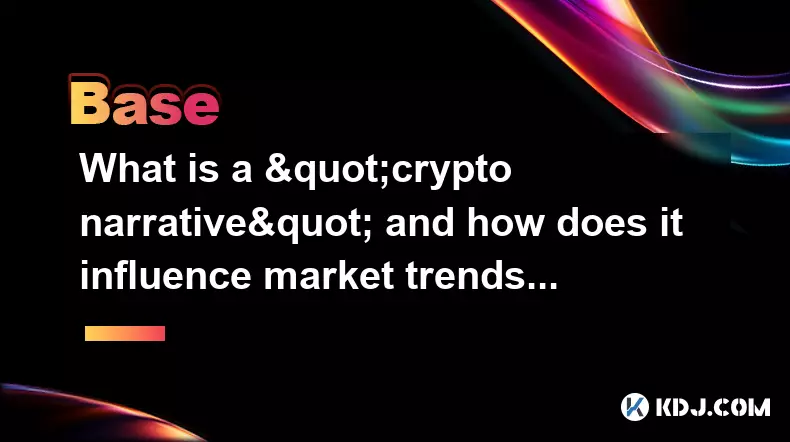-
 bitcoin
bitcoin $102877.190955 USD
1.88% -
 ethereum
ethereum $3430.435064 USD
4.52% -
 tether
tether $0.999264 USD
-0.05% -
 xrp
xrp $2.307310 USD
4.49% -
 bnb
bnb $987.740692 USD
3.82% -
 solana
solana $161.947760 USD
3.97% -
 usd-coin
usd-coin $0.999712 USD
-0.05% -
 tron
tron $0.292810 USD
2.93% -
 dogecoin
dogecoin $0.179738 USD
10.70% -
 cardano
cardano $0.580716 USD
8.75% -
 hyperliquid
hyperliquid $42.463448 USD
8.40% -
 chainlink
chainlink $15.763437 USD
7.05% -
 zcash
zcash $649.595636 USD
17.21% -
 bitcoin-cash
bitcoin-cash $511.610261 USD
7.19% -
 stellar
stellar $0.292537 USD
7.91%
What is a liquidity pool and how does it enable trading on a DEX?
Liquidity pools enable seamless trading on DEXs by allowing users to deposit token pairs, earn trading fees, and provide constant liquidity without relying on order books.
Nov 08, 2025 at 02:39 am

Understanding Liquidity Pools in Decentralized Finance
1. A liquidity pool is a smart contract-based reservoir of tokens that users contribute to in order to facilitate trading on decentralized exchanges (DEXs). Unlike traditional exchanges that rely on order books, DEXs use these pools to enable seamless token swaps. Each pool typically contains two or more tokens forming a trading pair, such as ETH/USDT.
2. Contributors, known as liquidity providers (LPs), deposit an equivalent value of both tokens in the pair. For example, to add liquidity to an ETH/DAI pool, a provider must deposit a balanced amount of both assets based on the current market price. In return, they receive LP tokens representing their share of the pool.
3. These pools power automated market maker (AMM) protocols, which use mathematical formulas—like x * y = k—to determine prices dynamically. As trades occur, the ratio of tokens in the pool changes, leading to price adjustments according to supply and demand within the pool.
4. The existence of liquidity pools eliminates the need for buyers and sellers to be present simultaneously. Instead, traders swap directly against the pool, enabling continuous trading with minimal slippage when sufficient liquidity is available.
5. Because anyone can become a liquidity provider, these systems democratize market-making. This decentralization reduces reliance on centralized intermediaries and enhances accessibility across global markets.
Liquidity Pools Reduce Dependency on Order Books
1. Traditional exchanges match buy and sell orders using an order book system, which requires high user activity to maintain depth. In contrast, DEXs with liquidity pools allow trades to execute instantly against pooled funds, removing the dependency on matching counterparties.
2. This mechanism ensures 24/7 availability for trading, even in low-volume markets. Smaller or newer tokens benefit significantly since they may not attract enough traders to sustain a healthy order book.
3. By locking assets into a smart contract, liquidity pools create constant availability of both sides of a trading pair. Traders can always find a counterparty—the pool itself—regardless of external market conditions.
4. Price discovery happens algorithmically rather than through bid-ask spread negotiation. While this introduces unique dynamics like impermanent loss, it also streamlines execution and improves efficiency for retail participants.
5. The removal of order books simplifies the architecture of DEXs, making them easier to deploy and audit on public blockchains. It also lowers entry barriers for developers building new financial applications atop existing liquidity infrastructure.
Rewards and Risks for Liquidity Providers
1. Liquidity providers earn fees from every trade that occurs in their respective pool. These fees, usually ranging from 0.01% to 1%, are distributed proportionally based on each provider’s share of the total liquidity.
2. Some platforms offer additional incentives in the form of governance or platform-specific tokens to attract liquidity. These rewards can significantly boost returns but often come with volatility risks tied to the incentive token's market performance.
3. One major risk faced by LPs is impermanent loss, which occurs when the price ratio of deposited tokens diverges from the initial deposit ratio. The greater the volatility, the higher the potential loss relative to simply holding the assets outside the pool.
4. Smart contract vulnerabilities also pose a threat. Since funds are locked in code, any undiscovered bugs or exploits could lead to partial or total loss of deposited assets, despite audits and security measures.
5. Despite these risks, many users participate due to attractive yield opportunities, especially in emerging DeFi ecosystems where capital efficiency and reward multipliers draw significant investment.
Frequently Asked Questions
How do liquidity pools determine token prices during trades?Liquidity pools use predefined mathematical formulas, most commonly the constant product formula (x * y = k), where the product of the reserves of two tokens must remain constant before and after a trade. When someone buys one token, its reserve decreases while the other increases, causing the price to rise logarithmically based on the size of the trade relative to the pool’s depth.
What happens if a liquidity pool lacks sufficient funds?A shallow pool leads to high slippage, meaning large trades significantly impact the price, resulting in unfavorable exchange rates for traders. This discourages usage and can destabilize the trading pair, especially for volatile or low-cap tokens. Deeper pools mitigate this issue by absorbing trades with minimal price impact.
Can liquidity providers withdraw their funds at any time?Yes, LPs can redeem their portion of the pool by burning their LP tokens. However, doing so exposes them to any accumulated impermanent loss up to that point. Withdrawals are subject to network transaction fees and may be temporarily restricted during protocol upgrades or emergencies.
Are all liquidity pools limited to two tokens?No, while most common pools are dual-token pairs, some protocols support multi-asset pools. For instance, Curve Finance utilizes pools with multiple stablecoins, optimizing for low slippage and efficient peg maintenance among similar-value assets.
Disclaimer:info@kdj.com
The information provided is not trading advice. kdj.com does not assume any responsibility for any investments made based on the information provided in this article. Cryptocurrencies are highly volatile and it is highly recommended that you invest with caution after thorough research!
If you believe that the content used on this website infringes your copyright, please contact us immediately (info@kdj.com) and we will delete it promptly.
- Ripple (XRP) in 2026: Hold or Fold? A Look at XRP's Future and Emerging DeFi Alternatives
- 2025-11-08 18:35:01
- Zcash ZEC Coin Price Explosion: From Privacy Niche to Center Stage
- 2025-11-08 18:55:01
- Berachain Price Prediction: Navigating the Honeycomb Hype in Crypto
- 2025-11-08 18:55:01
- Arthur Hayes, Gold, and Bitcoin: A Modern Monetary Trinity?
- 2025-11-08 19:15:01
- Shiba Inu's Next Move: Navigating a Shifting Market
- 2025-11-08 19:20:01
- Pakistan's Crypto Crossroads: Balancing Opportunity with Asset-Backed Realities
- 2025-11-08 19:20:01
Related knowledge

How does a crypto insurance protocol work?
Nov 08,2025 at 12:39am
Understanding Crypto Insurance Protocols1. A crypto insurance protocol operates by offering financial protection against losses incurred from digital ...

What is a decentralized storage network and how does it compare to cloud services?
Nov 07,2025 at 11:59pm
Understanding Decentralized Storage Networks1. A decentralized storage network distributes data across a peer-to-peer infrastructure rather than relyi...

What is a factory contract and how is it used to deploy other contracts?
Nov 08,2025 at 04:20am
Understanding Factory Contracts in Blockchain Development1. A factory contract is a smart contract designed to create and deploy other smart contracts...

What is "alpha" in crypto and how do people find it?
Nov 08,2025 at 06:19pm
Understanding Alpha in the Cryptocurrency Space1. In the context of cryptocurrency, 'alpha' refers to valuable, non-public information or insights tha...

What is a "crypto narrative" and how does it influence market trends?
Nov 08,2025 at 07:00am
Understanding the Concept of a Crypto Narrative1. A crypto narrative refers to the collective belief or story that emerges within the cryptocurrency c...

What is an address poisoning scam and how can you prevent it?
Nov 08,2025 at 02:20am
Understanding Address Poisoning Scams in the Crypto Space1. An address poisoning scam is a deceptive tactic used by malicious actors within the crypto...

How does a crypto insurance protocol work?
Nov 08,2025 at 12:39am
Understanding Crypto Insurance Protocols1. A crypto insurance protocol operates by offering financial protection against losses incurred from digital ...

What is a decentralized storage network and how does it compare to cloud services?
Nov 07,2025 at 11:59pm
Understanding Decentralized Storage Networks1. A decentralized storage network distributes data across a peer-to-peer infrastructure rather than relyi...

What is a factory contract and how is it used to deploy other contracts?
Nov 08,2025 at 04:20am
Understanding Factory Contracts in Blockchain Development1. A factory contract is a smart contract designed to create and deploy other smart contracts...

What is "alpha" in crypto and how do people find it?
Nov 08,2025 at 06:19pm
Understanding Alpha in the Cryptocurrency Space1. In the context of cryptocurrency, 'alpha' refers to valuable, non-public information or insights tha...

What is a "crypto narrative" and how does it influence market trends?
Nov 08,2025 at 07:00am
Understanding the Concept of a Crypto Narrative1. A crypto narrative refers to the collective belief or story that emerges within the cryptocurrency c...

What is an address poisoning scam and how can you prevent it?
Nov 08,2025 at 02:20am
Understanding Address Poisoning Scams in the Crypto Space1. An address poisoning scam is a deceptive tactic used by malicious actors within the crypto...
See all articles





















![The Graph Price Prediction [GRT Crypto Price News Today] The Graph Price Prediction [GRT Crypto Price News Today]](/uploads/2025/11/07/cryptocurrencies-news/videos/690d4df44fe69_image_500_375.webp)



















































